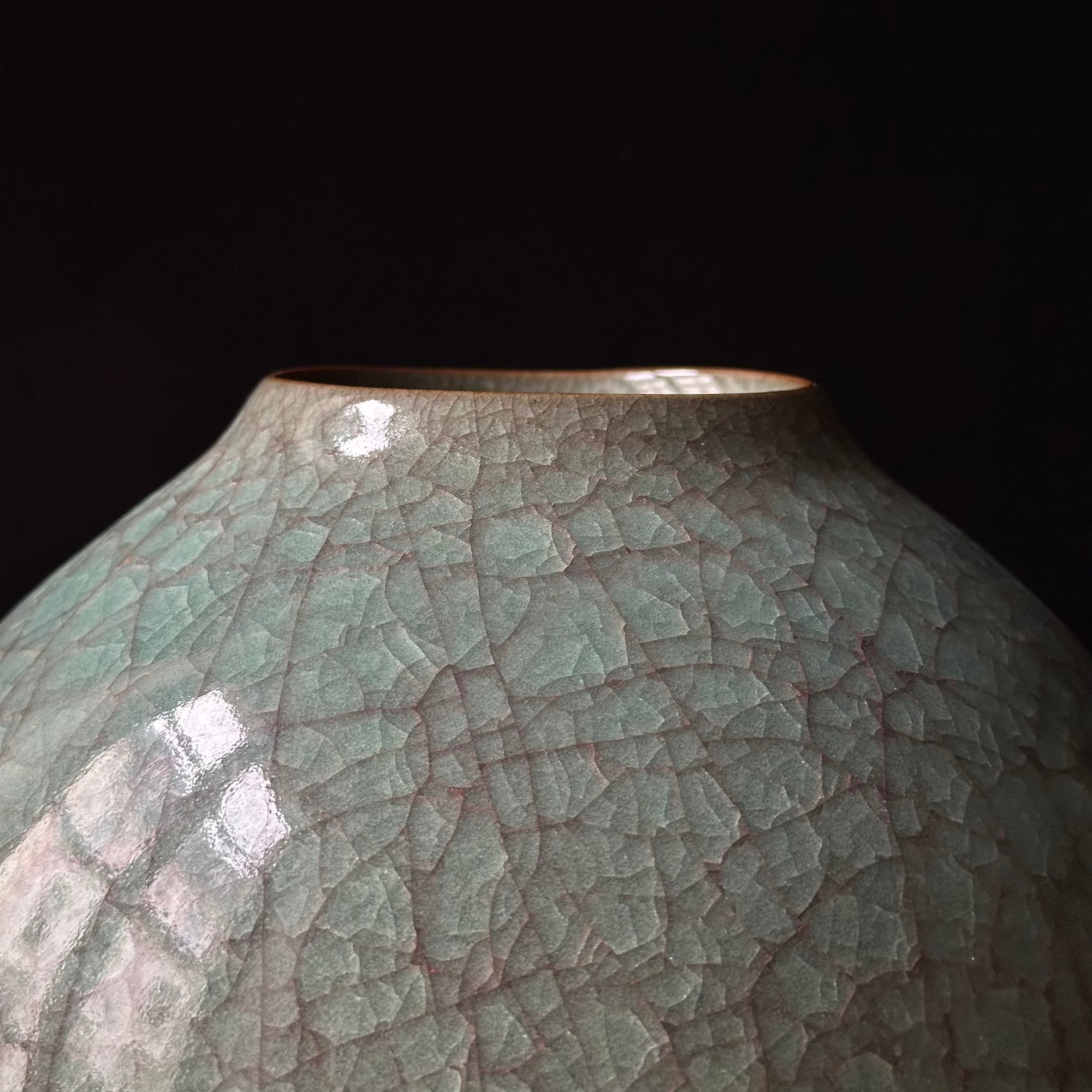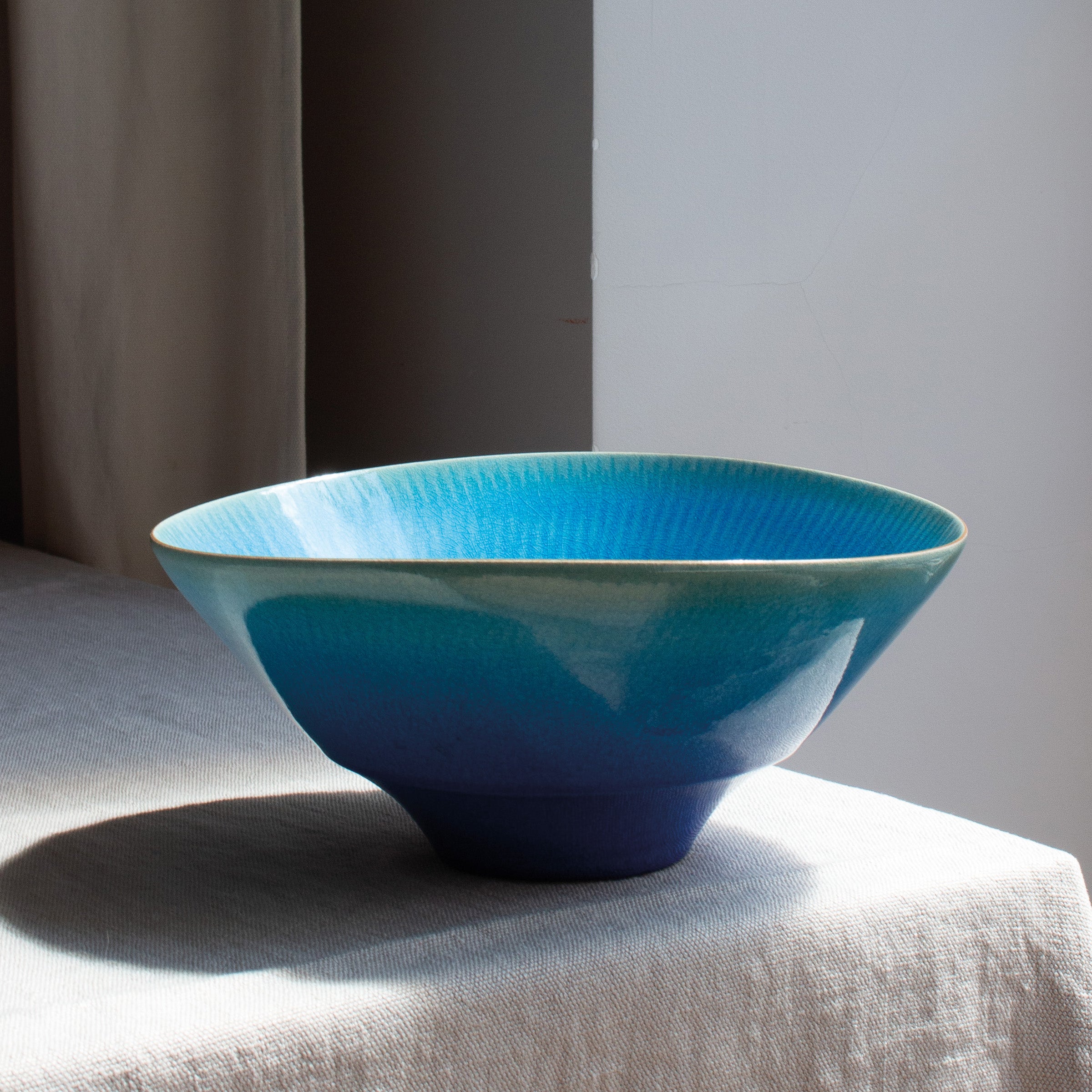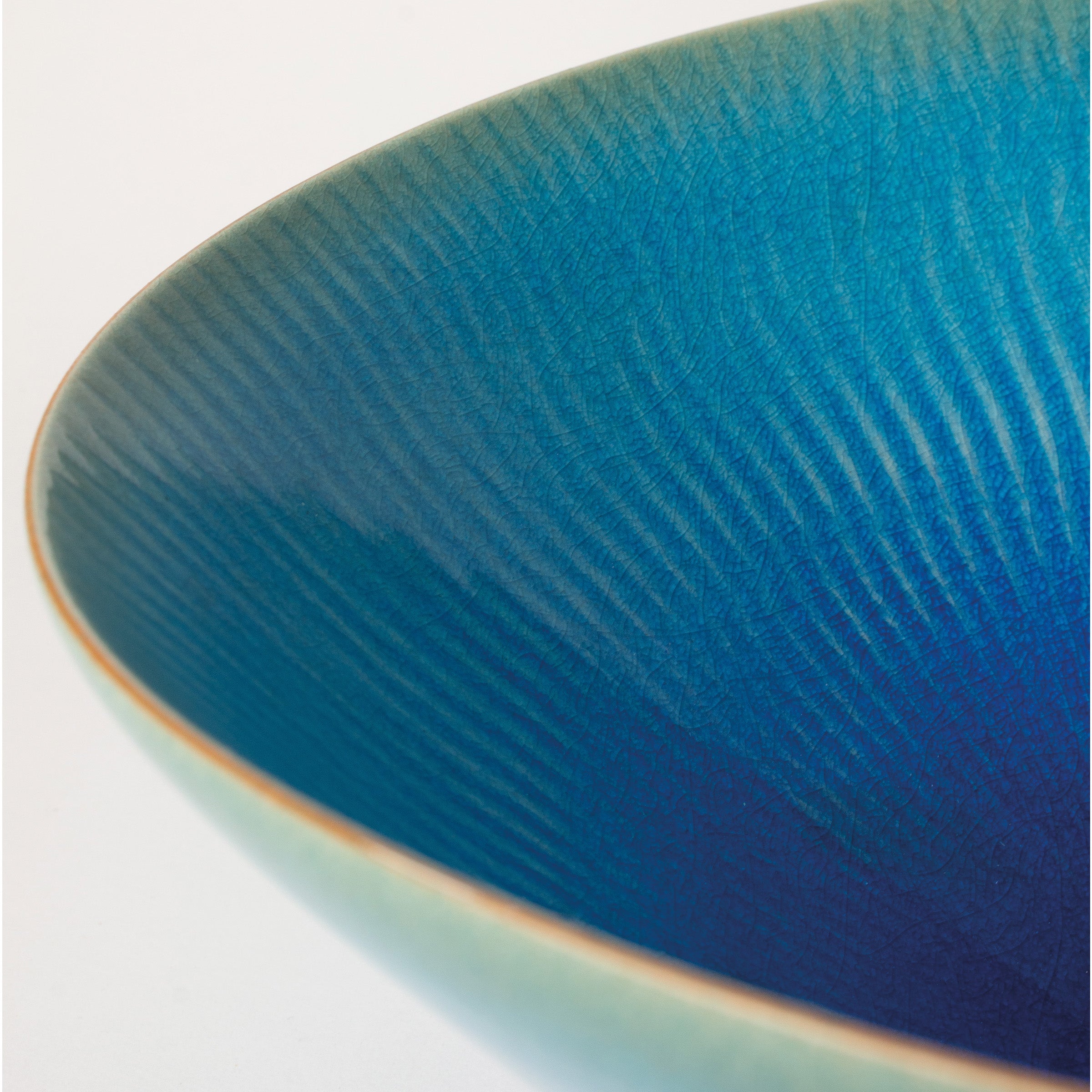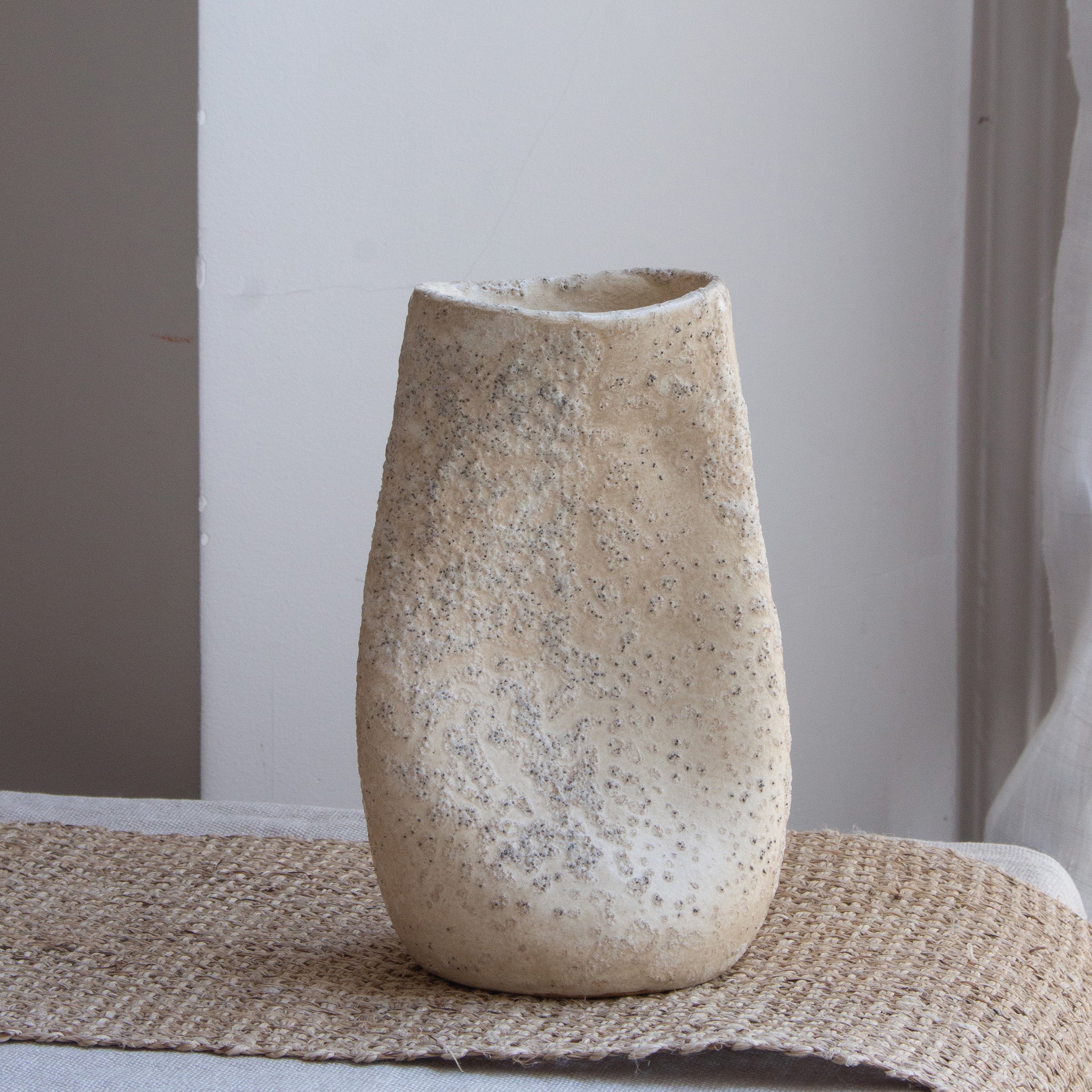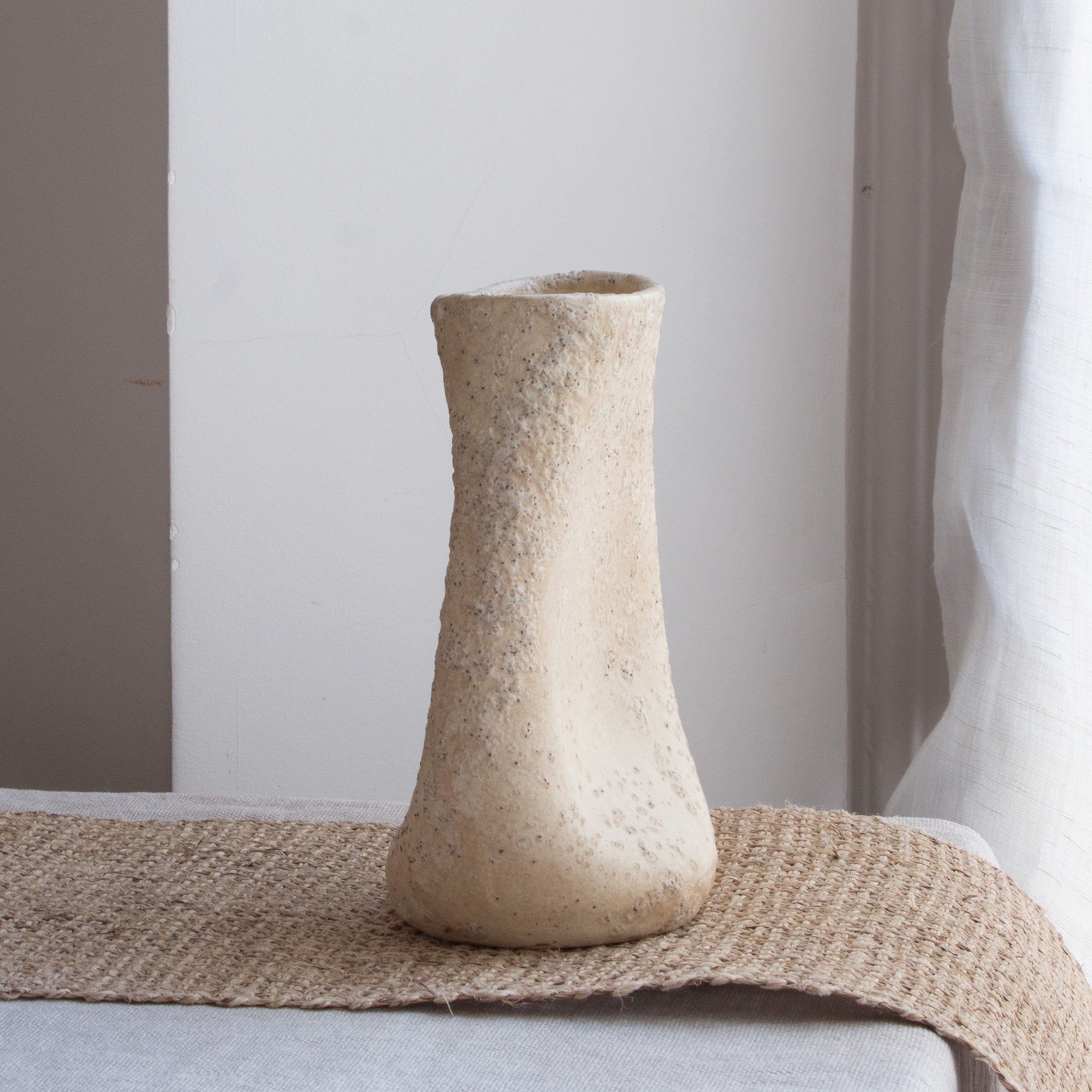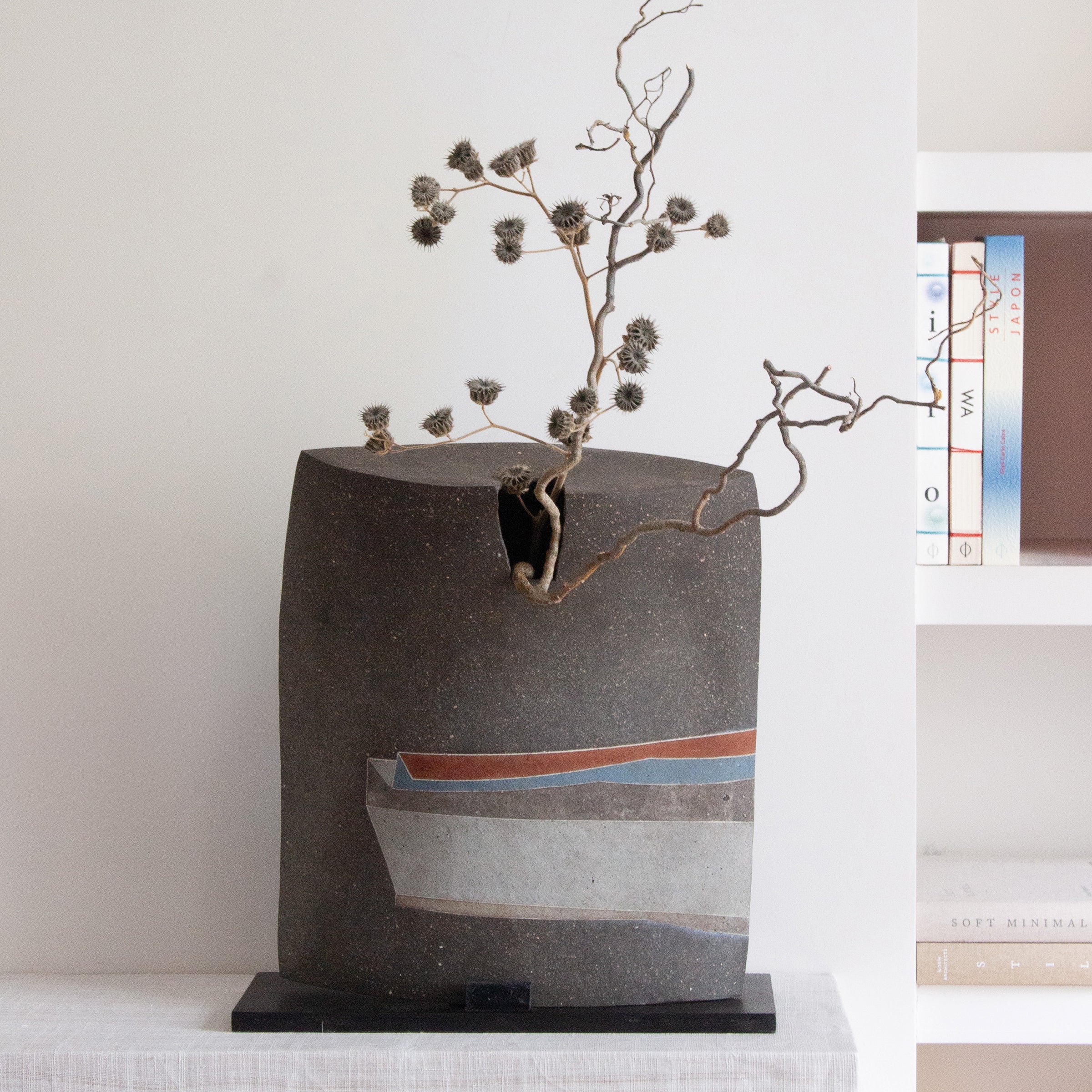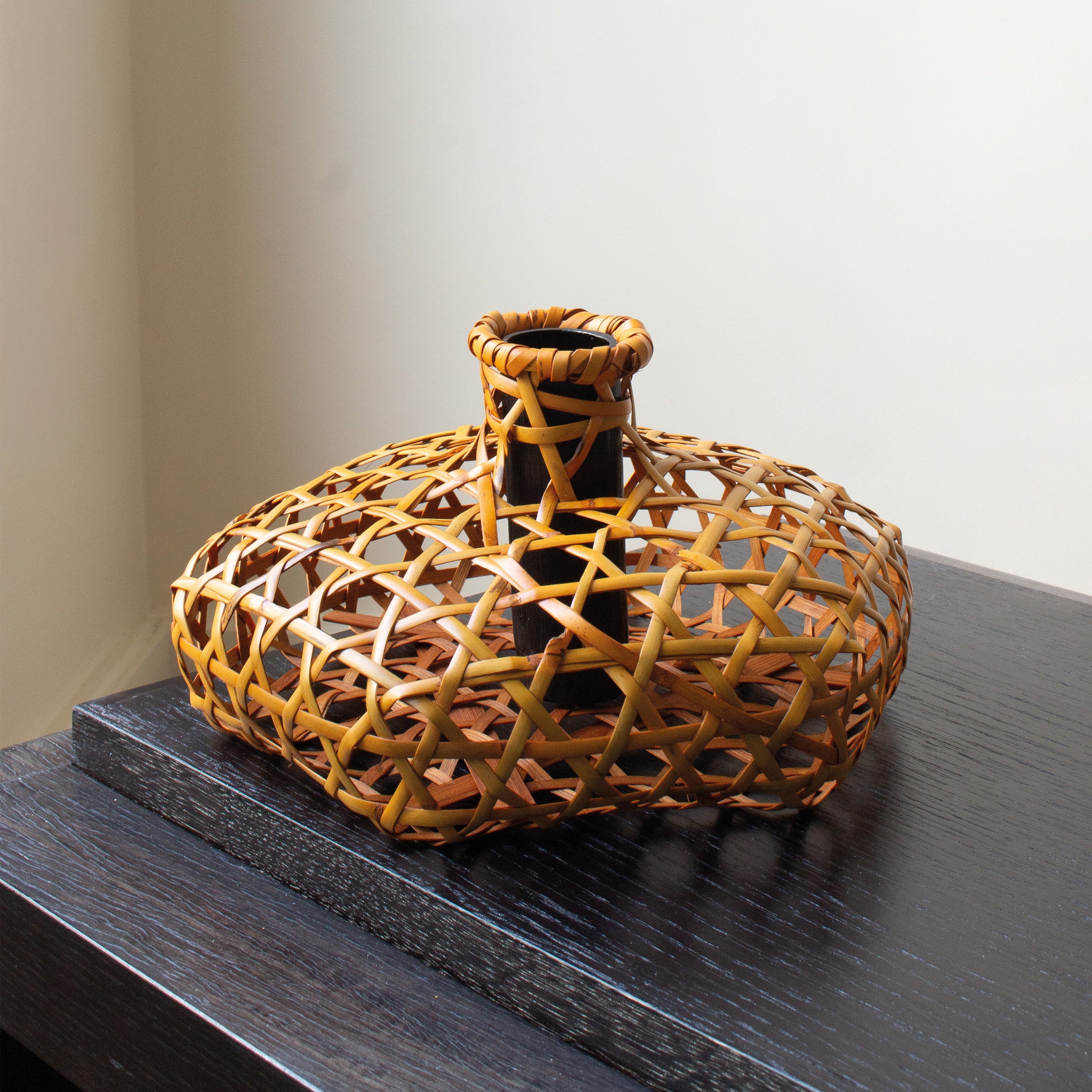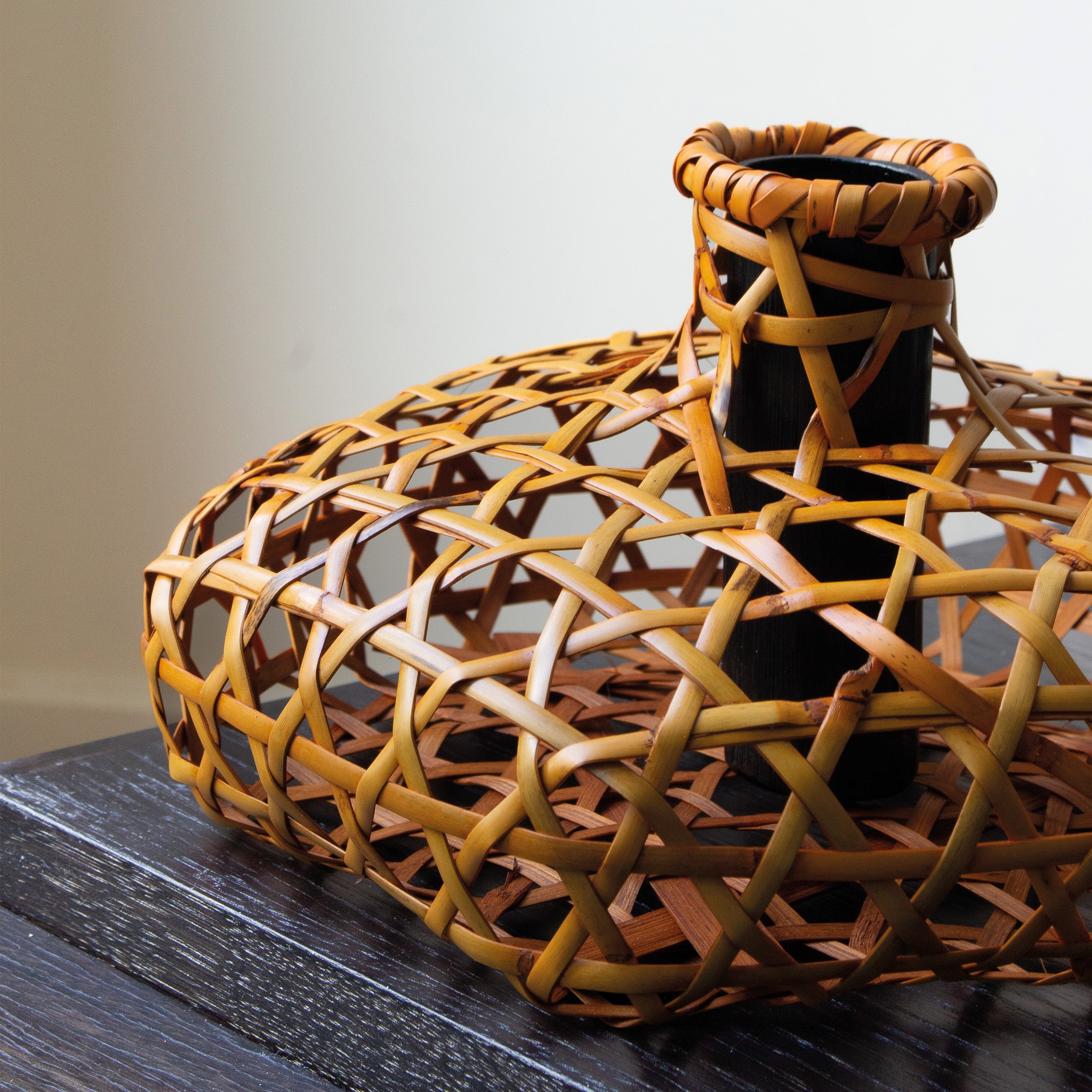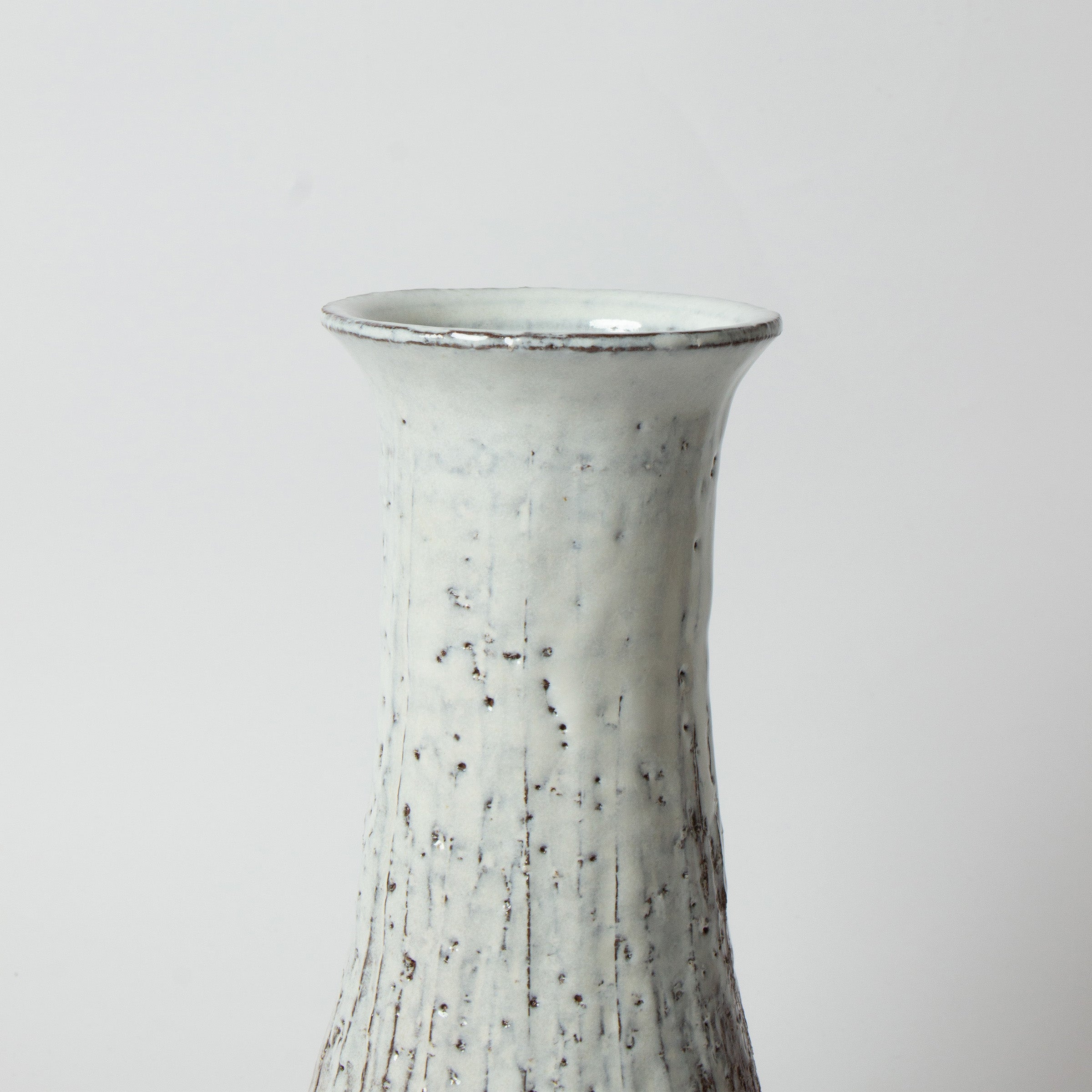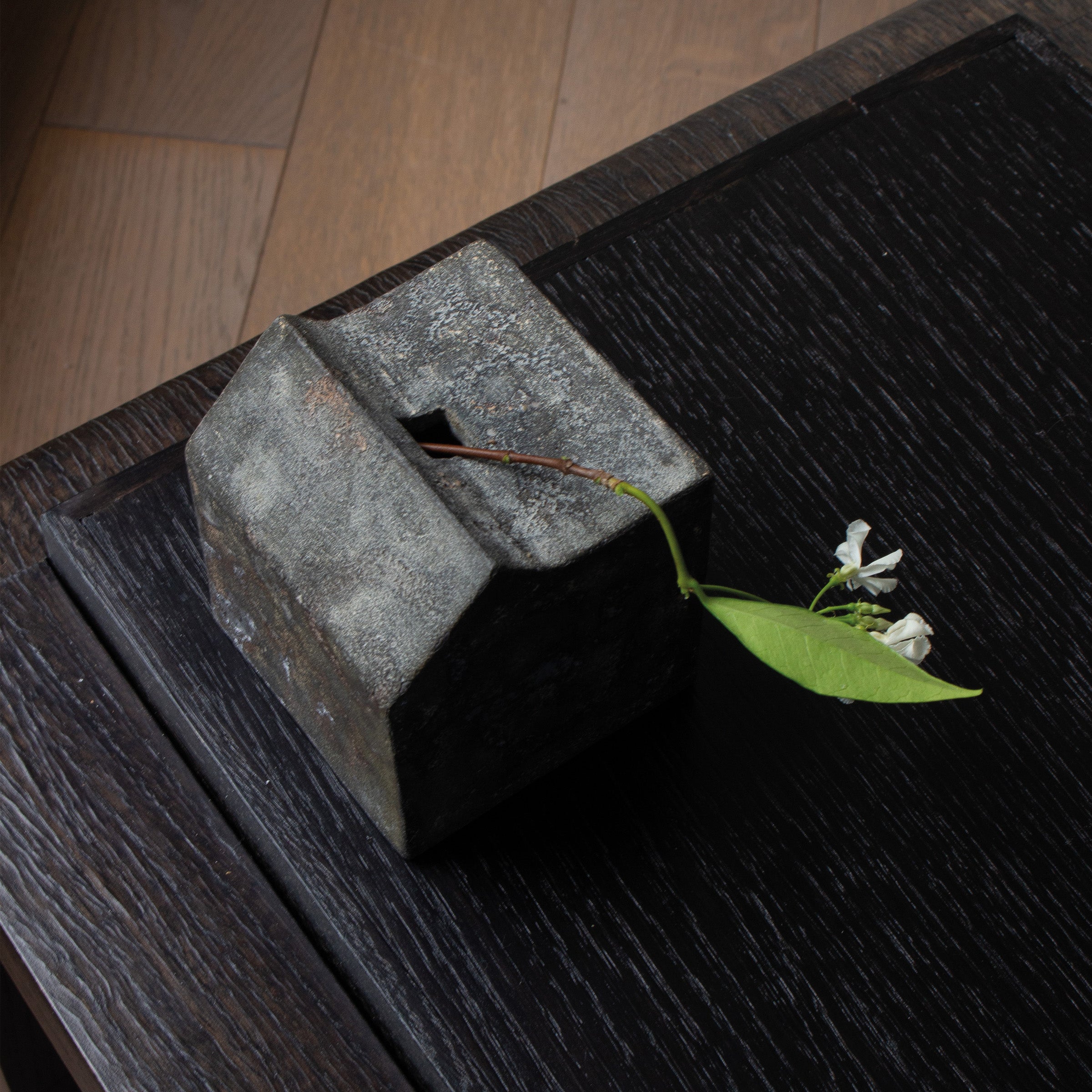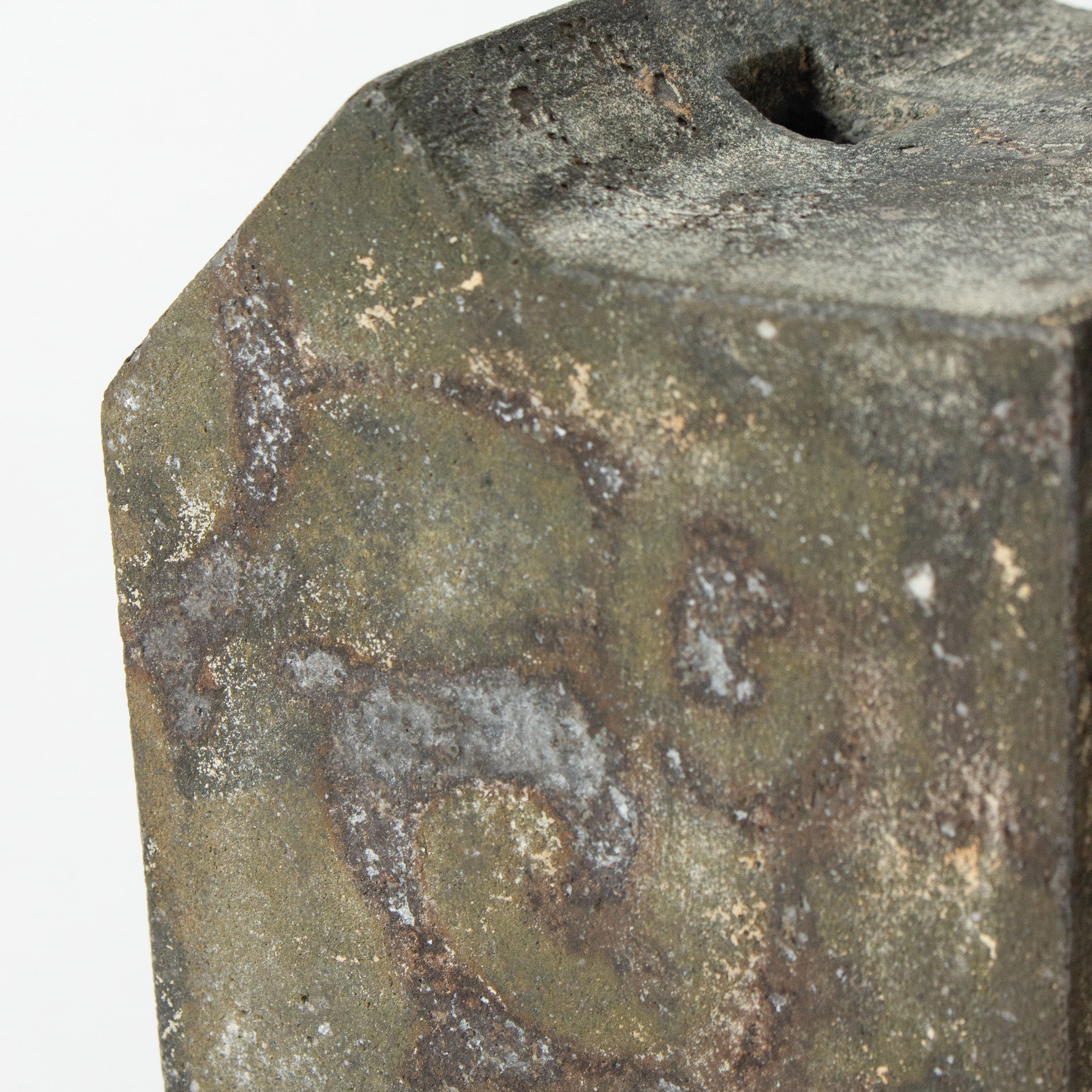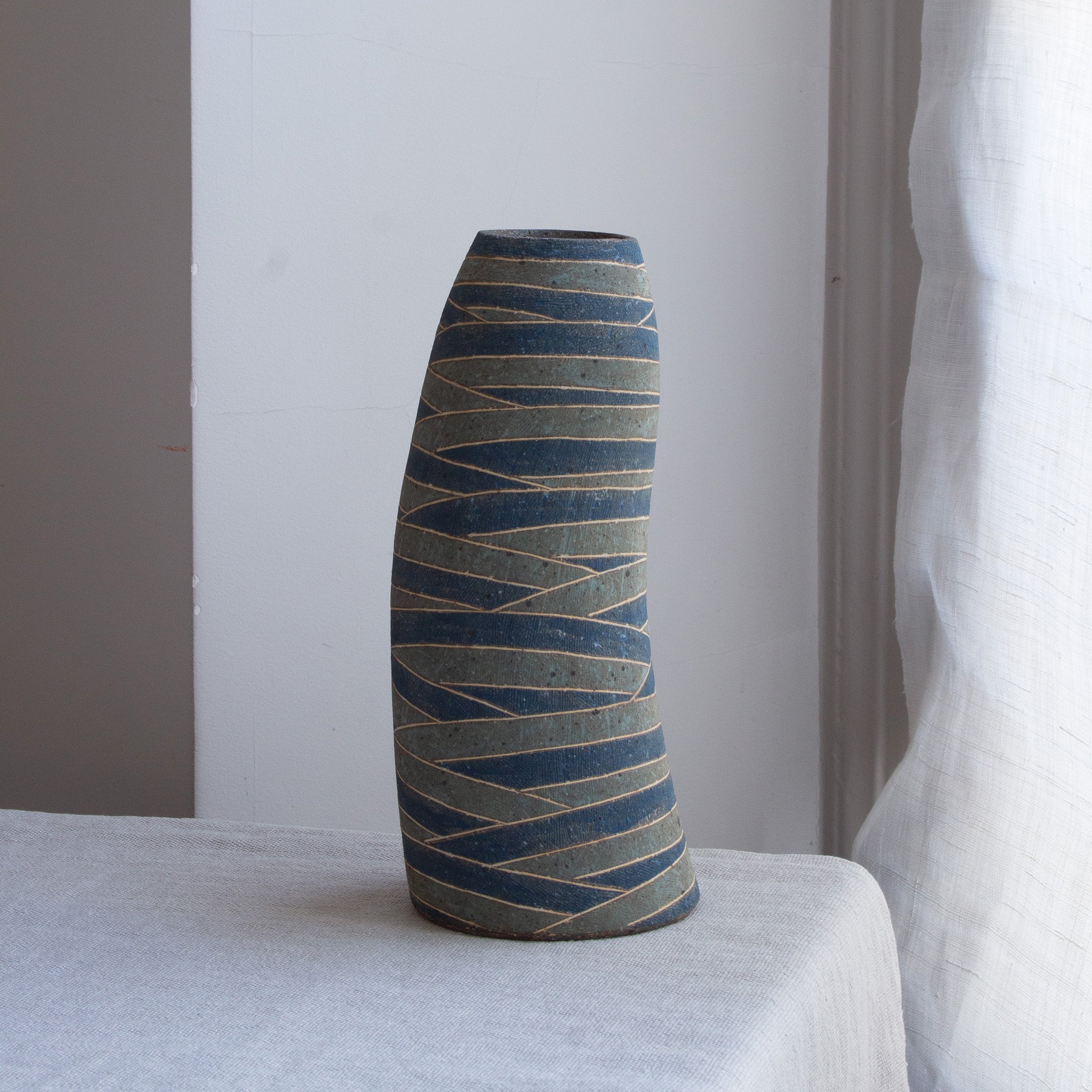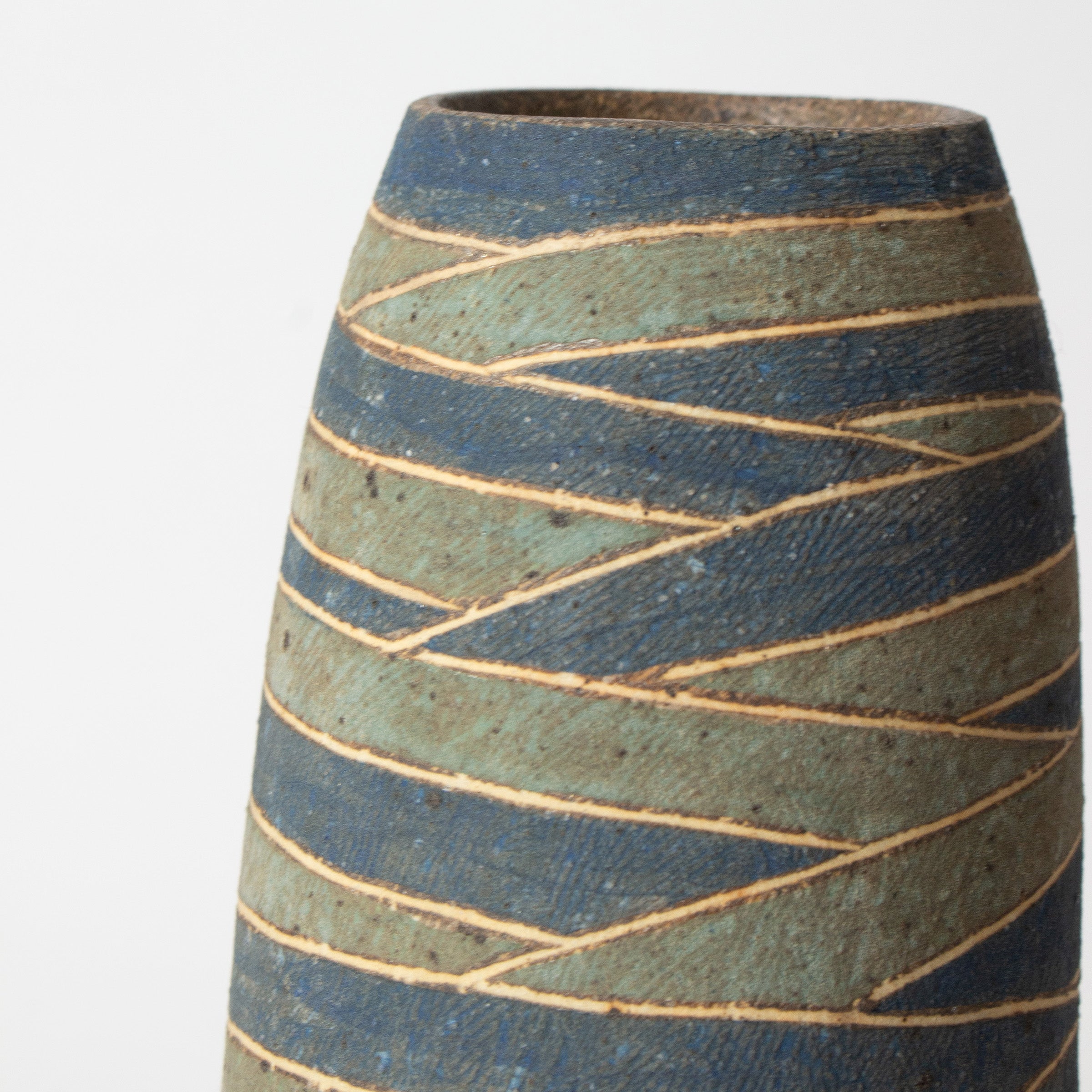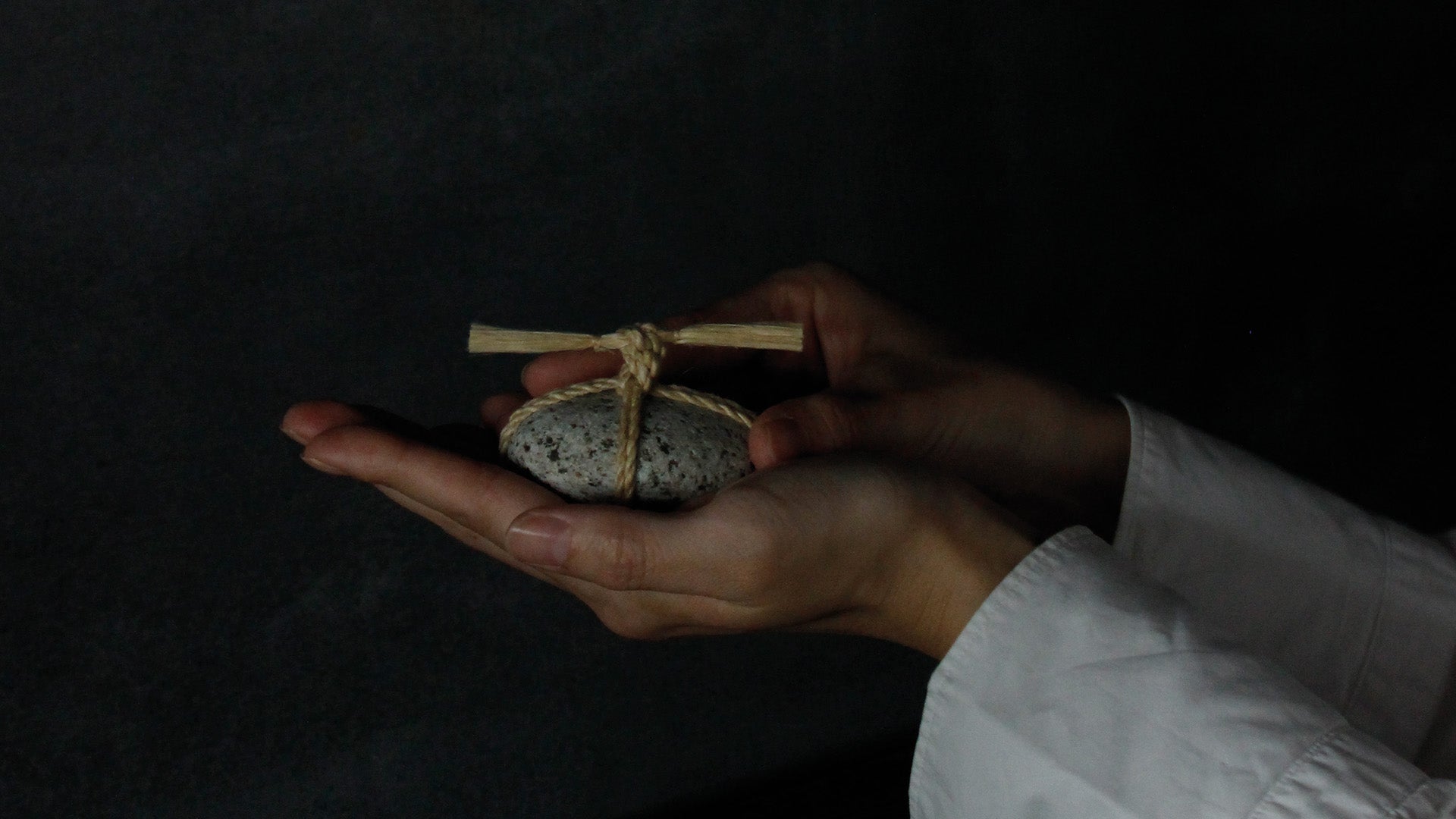
The Sōdeisha Movement: A Silent Revolution in Japanese Ceramics
A BREAK IN THE POST-WAR JAPANESE CERAMICS LANDSCAPE
Founded in Kyoto in 1948, the Sōdeisha movement marked a decisive turning point in the history of Japanese ceramics. Faced with the still dominant aesthetic conventions of the post-war period, its founders proclaimed a new path: that of ceramics freed from all function, stripped of utilitarianism, and turned towards formal experimentation. Their works are no longer containers but volumes, plastic presences in their own right. In this, Sōdeisha is part of a form of Japanese modernity, as radical as it is singular, while maintaining a close relationship with the ceramic material itself: the density of the clay, its variations in texture, the resonance of the surfaces after firing, and the way in which it interacts with space.
Facing mingei, an aesthetic of emancipation
In the immediate postwar period, Japan was a country undergoing reconstruction, both economically and in terms of identity. The field of ceramics remained dominated by the mingei movement, led by Yanagi Sōetsu, Shoji Hamada, and Kanjiro Kawai, which advocated the valorization of everyday objects, often anonymous, and of spontaneous beauty. The aesthetic of mingei was nourished by vernacular traditions and functionalism. Faced with this, the young ceramists of Sōdeisha, trained in art schools and exposed to modern Western art, rebelled against this approach, which they considered conservative. Their position was clear: ceramics must be able to exist as an autonomous visual art, without recourse to custom or folklore.
A new definition of the ceramic gesture
The name Sōdeisha can be read as "the society of people who gallop in the mud." It is a deliberately ambivalent metaphor: both rooted in the earth, and a movement forward. It is therefore not a rejection of tradition, but rather a desire to reconfigure it. Among the founding members, Yagi Kazuo occupies a central place. He is joined by other prominent figures such as Suzuki Osamu, Yamada Hikaru, and Kumakura Junkichi, whose trajectories have each contributed to defining the contours of a liberated ceramic.
Yagi Kazuo, pioneer of the sculptural object
Yagi Kazuo (1918–1979) is often considered the pioneer of non-functional ceramics in Japan. Trained at the Kyoto Municipal School of Fine Arts, he was a painter, sculptor, and ceramist. In 1954, his work "Mr. Samsa's Walk," inspired by Kafka, marked a historical milestone: it is a closed, sculptural form, without opening or function, which Yagi himself described as a "yaki-object." This piece, now held in the national collections, perfectly embodies the Sōdeisha aesthetic: material surface, internal tension, abstraction. His white vases with slip and iron inlays, of great plastic rigor, are today highly sought after on the international market. You can discover the one presented in this article and offered for sale in our eshop via this link .

Kumakura Junkichi, rigorous material and freedom of form
Kumakura Junkichi (1920–1986), although less famous, is a key figure in the group. He works in particular with effect glazes such as namako-yū, applied to sober, silent forms, sometimes abstract, sometimes open to a possible use, without ever being constrained by it. His work is distinguished by a subtle balance between vitrified material and formal restraint. Some of his works are now preserved in Japanese public collections and sought after for their singularity; you can discover the one presented in this article and offered for sale in our eshop via this link .

Late but profound international recognition
Recognition of the Sōdeisha movement was slow, but profound. Long marginalized in Japan, the group's members benefited from a gradual rehabilitation starting in the 1970s, thanks to the interest of contemporary art curators and theorists. Museums such as the National Museum of Modern Art in Kyoto and the National Museum of Modern Art in Tokyo dedicated exhibitions to them, while American and European galleries began to integrate their pieces into the mainstream market. Today, some works by Yagi or Kumakura fetch prices comparable to those of modern Japanese sculptors, reinforcing their status in the history of contemporary art.
A new status for the Japanese ceramist
What the movement changed was the very definition of what a ceramicist could be in Japan. Until then, the term potter or craftsman implied a relationship to use, to ritual, to the service of function. Beauty was often conceived as a consequence of use. By refuting this, Sōdeisha introduced a new notion: that of the ceramic work as an autonomous plastic creation, as an object of thought and contemplation. The ceramicist becomes an author, a visual artist. This redefinition has allowed the emergence of a generation of ceramic artists, now internationally recognized, who blur the lines between sculpture, crafts, and design.
A Living Industry: Five Contemporary Ceramicists in the Spirit of Sōdeisha
Kazuhiko Sato designs vases with sculptural forms of great technical mastery that recall Sōdeisha's desire to transcend function. Koinuma Michio, with his mineral textures and powerful volumes, creates a dialogue between raw materials and formal thought in a line clearly freed from utility. Shingo Takeuchi, for his part, is part of an aesthetic that inscribes traditional techniques in a true modernity. Ken Mihara, whose mineral forms summon the notion of interior landscape, pursues a dialogue with materials that echoes that of Yagi Kazuo. Eiko Kishi, with his deliberately ambiguous objects, somewhere between sculpture and imaginary archaeology, pursues the line of intellectual and free ceramics. Yoshiro Kimura, depending on the pieces, can be associated with this same desire for independence from use, although his aesthetic approach sometimes falls into a different register. Discover a demanding selection of vase-sculptures by these artists in the exceptional objects section of our e-shop .

A silent but decisive revolution
Far from being a mere postwar episode, Sōdeisha is a major milestone in the history of modern ceramics. A movement that, by redefining the function of the ceramist and the status of the object, opened up a fertile field for contemporary Japanese creation. The work of figures like Yagi Kazuo and Kumakura Junkichi embodies all its rigor, freedom, and fascinating strangeness. Even today, their pieces speak a language that transcends the divides between art and craft, to address our contemporary gaze with undiminished force.
Sources used to write this article:
– Isamu Noguchi and Modern Japanese Ceramics: A Close Embrace of the Earth , M. Louise Cort, Harry N. Abrams / Smithsonian Institution, 2003
– Tradition and Innovation: Contemporary Japanese Ceramics from the Collection of Gordon Brodfuehrer , Mingei International Museum, 2015
– Japanese Ceramics Today Part I–III , National Museum of Modern Art, Tokyo / Kyoto
– Avant-Garde Clay: Sōdeisha and Their Legacy in Contemporary Japanese Ceramics , Dai Ichi Arts, 2020
– Ceramics and Modernity in Japan , Meghen Jones and Louise Cort (eds.), Routledge, 2018
– Exhibition archives of MOMAK (National Museum of Modern Art, Kyoto), including retrospectives on Yagi Kazuo and the Sōdeisha group
– Articles from the magazine Ceramics Monthly (USA) on contemporary Japanese ceramics



